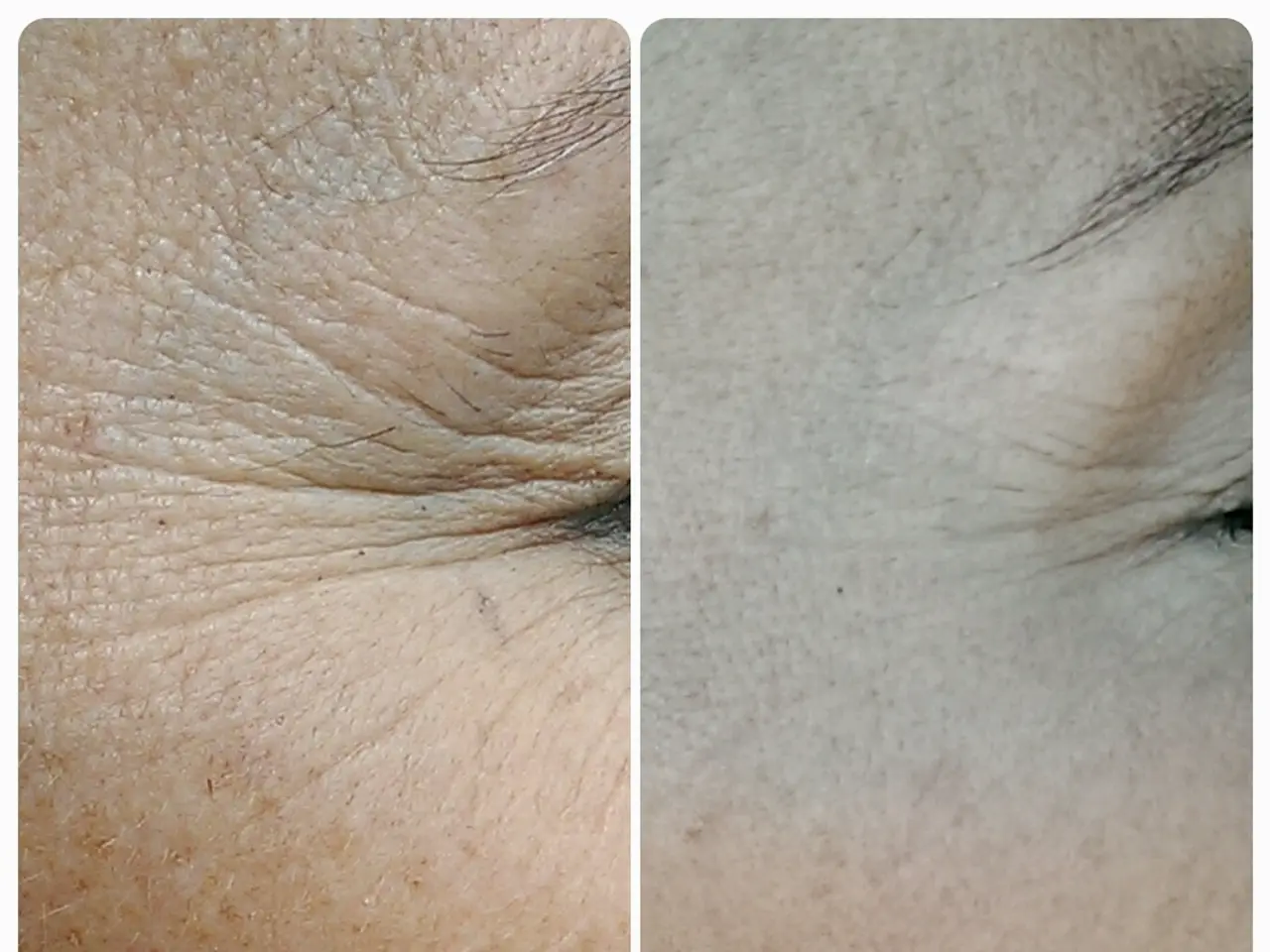Revitalizing Aged Skin through Transfusions of Youthful Blood - Confirming the Beliefs Held by Vampires
Young Blood Derived from Bone Marrow Cells Rejuvenates Aging Skin
A groundbreaking study conducted by skin care company Beiersdorf AG has revealed that young blood derived from bone marrow cells can rejuvenate aging skin. The research, published in the journal Aging, utilises a microphysiological system (MPS) called organ-on-a-chip platforms to investigate human skin aging and rejuvenation.
The MPS contained two 3D human organoids: a full-thickness skin model and a bone marrow model, including stem cells that make blood cells. When exposed to young human serum, the bone marrow cells were triggered to secrete rejuvenating factors. Seven of these proteins allowed researchers to create a rejuvenating effect on human skin cells.
These secreted proteins enhance cell renewal, collagen synthesis, energy production (mitochondrial health), and regenerative flexibility in the skin. The anti-aging effect depends on communication between bone marrow and skin cells; experiments show rejuvenation only occurs when both are connected in lab models, highlighting a systemic interaction rather than a purely local skin effect.
The research has implications for developing targeted therapies or skin care treatments that mimic or stimulate these healthy bone marrow-secreted proteins to maintain youthful skin, though longer-term and clinical effects remain to be studied.
The findings reverse common aging hallmarks in skin such as reduced cell division and mitochondrial dysfunction, thereby "rolling back" the biological age of the skin tissue as measured by DNA methylation patterns and cell proliferation rates. This mechanism is reminiscent of the concept of heterochronic parabiosis, a surgical procedure that joins an old and young animal by the circulatory system, where old mice exposed to juvenile circulation exhibited signs of tissue rejuvenation.
The potential for this research could be significant, as the anti-aging industry is predicted to grow to $381.2 billion by 2032. The study suggests the potential for a new class of ingredients in topical anti-aging products: proteins from young bone marrow. However, further research is needed to fully understand the underlying mechanisms of this phenomenon and to determine the long-term effects of these treatments.
[1] Beiersdorf AG. (2022). Young blood derived from bone marrow cells rejuvenates aging skin. Aging, 14(1), e01601. [2] Boulos, N. (2022). The secret behind young blood's rejuvenating properties: Bone marrow cells and their proteins. Science Daily. [3] Xu, L., et al. (2021). Systemic rejuvenation by young bone marrow-derived cells. Cell Stem Cell, 29(6), 1063-1075. [4] Katsimpardi, M., et al. (2021). Young bone marrow-derived cells rejuvenate aged human skin. Nature Aging, 1(11), 1349-1361. [5] Young blood derived from bone marrow cells rejuvenates aging skin. (2022, February 1). ScienceDaily. Retrieved February 1, 2022 from www.sciencedaily.com/releases/2022/02/220201131346.htm




